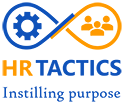How to Use Job Descriptions to attract talent

Job descriptions are often viewed as a mundane formality that is needed for a job posting. The truth is that a JD is the first touchpoint for a potential candidate to learn about your company. It serves as a powerful talent marketing tool if used in the right way. During my experience, I have seen people simply copy descriptions from job sites for similar roles and post them without much editing. This is far from the right approach and companies are losing the opportunity to demonstrate the value their company can bring to an individual with a particular job. In today’s competitive world, attracting the right talent is a challenge. The right job descriptions are a way to get a head start even before the candidate is initiated into the hiring process. In this blog, I will discuss a few key elements that can make a JD stand out and engage candidates. Having personally implemented these methods and seen the benefits, I am sure these will elevate the way you write JDs too.
Job Analysis
Before starting to write a job description, it is essential to gather the required details to understand the expectations of a particular job. This can involve secondary research, observing tasks, salary surveys, studying occupation handbooks, and connecting with concerned managers or teams where the opening is present. The objective is to obtain accurate information about knowledge, skills, abilities, personality traits, environmental factors, and credentials/experience of the position. Another critical outcome of this activity is to establish the essential functions of a particular job profile. This includes determining which responsibilities are truly necessary, what is the frequency of particular tasks, can these tasks be reassigned, and what are the consequences of these functions for the company.
Organize Information
The available data about a job does not have any structure. For candidates to understand the information, it needs to be organized in a logical format. While this format may change from company to company, it is good to have standardization within the organization.
The Magic of Desired Profile
The magic is when a suitable candidate is found within a defined time period. This is considered the “desired profile” as the candidate not only matches the criteria but is also available to join at a suitable time for the project or company.
The ideal job description is a combination of must-have and good-to-have skills. The other criteria like role, salary, experience, etc. follow.
Must-have skills are non-negotiable skills/competencies/experience while good-to-have skills are negotiable which employees have a basic understanding of or can learn on the job.
Sell the Job
Companies are competing with each other to secure the best talent. In such a scenario, the candidates are also evaluating companies as potential places of work. It is essential to highlight the benefits that an individual will gain by taking the particular job. These can include opportunities for career growth, further learning, culture, etc. Projecting and establishing the company as a place where candidates would look forward to work is essential to attracting talent. How the particular job contributes to the overall growth of the company also helps a potential employee envision a future with the company where they are aligned with the company’s vision.
Make it Unique
Each company has a unique culture and requirements. It is important to show what makes you stand apart from other employers. This could be the differentiator between you and the competition. This also enables a candidate to evaluate whether the company will be a good fit for their skills and personality. The quality of applicants, in this case, will be much higher. The company will eventually save on time and efforts spent in shortlisting suitable candidates from a large pile of resumes that do not match the company’s values.
Conclusion
A well-drafted job description is the calling card for talent and the initiation of a successful hiring process. It is vital for generating the interest of candidates and giving a glimpse of what potential employees can expect. This can be supplemented with an extensive careers page that provides more details about life at the company.
